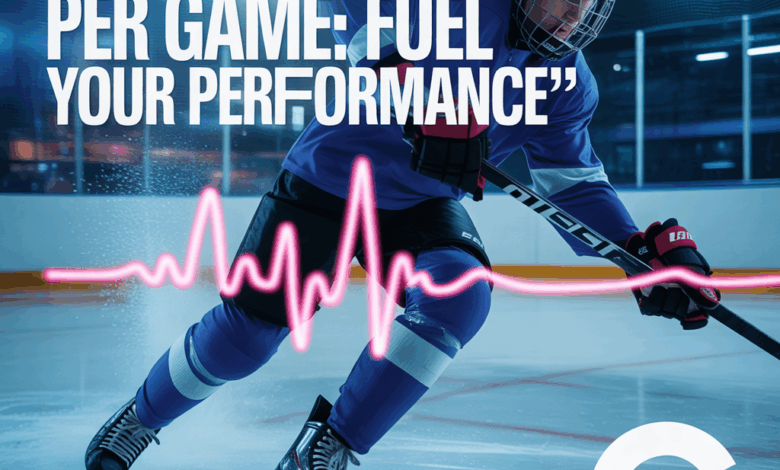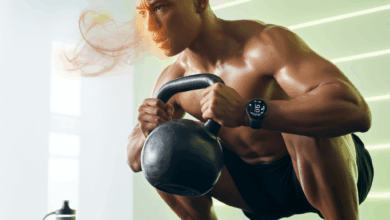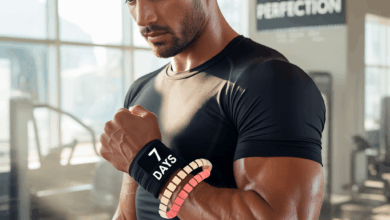How Many Calories Do You Burn Playing Hockey

Ever looked at your skates after a hard scrimmage and wondered, “Was that two hours of skating worth the calories?” Whether you’re lacing up for a weekend pickup game or training for competitive play, knowing how many calories you burn can help you plan workouts, meals, and recovery. In this post we’ll break down realistic calorie estimates, show you how to calculate your own burn, and share actionable tips to get fitter and faster on the ice.
How many calories do you burn playing hockey?
Short answer: it depends. The calories burned playing hockey vary by body weight, intensity (pickup vs. competitive game), position, and duration. Using metabolic equivalents (METs) — a common way to estimate energy expenditure — hockey usually ranges from about 7 METs for recreational play up to 10 METs or more for high-intensity competitive hockey. That gives a wide range of calories burned per hour.
Quick calorie examples by weight and intensity
- Formula: calories burned per hour ≈ MET × body weight (kg).
- 150 lbs (68 kg): 7 METs → ~476 kcal/hr; 10 METs → ~680 kcal/hr.
- 180 lbs (82 kg): 7 METs → ~574 kcal/hr; 10 METs → ~820 kcal/hr.
- 200 lbs (91 kg): 7 METs → ~637 kcal/hr; 10 METs → ~910 kcal/hr.
So a 60-minute pickup game for a 180-lb player will burn roughly 300–820 calories depending on how much shifting, sprinting, and downtime there is. A shorter 30-minute high-intensity shift session will still knock off 300–450 calories for many players.
What factors affect energy expenditure in hockey?
Calories burned aren’t static. Consider these variables:
- Intensity: Sprinting, battling in corners, and frequent shifts increase calorie burn more than slow-paced drills.
- Position: Forwards and defensemen who skate up and down the ice burn more than goalies, who have more static movements.
- Body mass: Heavier players expend more energy moving their weight (so they burn more calories at the same intensity).
- Skill level: Better-conditioned players may perform the same work with lower heart rate, altering calorie estimates.
- Game structure: Scrimmages with line changes are more stop-and-go and can be less continuous than endurance skating.
Real-world scenarios
- Weekend recreational adult league (moderate pace, 60 mins): ~400–700 kcal for most players.
- Competitive junior/pro hockey game (high intensity, 60 mins but with stoppages): ~600–900+ kcal.
- Goalie during a game (lower continuous movement): often less — roughly 200–400 kcal per hour.
How to track your hockey calorie burn accurately
Wearable tech makes estimates easier, but it’s not perfect. Here’s how to get closer to real numbers:
- Use a heart rate monitor or GPS-enabled device that supports indoor sports. Heart-rate based algorithms often outperform generic step counters for hockey.
- Input your correct weight and age into the device settings to improve accuracy.
- Combine device data with MET-based calculations for a sanity check.
- Track trends rather than obsessing over single sessions — focus on weekly calorie burn and training load.
Workout variations to increase calorie burn (on and off the ice)
Want to burn more or get in better shape for hockey? Mix these into your routine.
On-ice drills
- Interval sprints: 30s all-out, 30–60s rest × 8–12 reps.
- Power skating: emphasis on explosive starts and long strides for speed endurance.
- Small-area games: 3-on-3 or 2-on-2 scrimmages force sustained high effort and frequent changes.
Off-ice conditioning
- HIIT sessions (bike or rower): 20–30 minutes of intervals to mimic shift intensity.
- Strength training: squats, deadlifts, and single-leg work to transfer power to your stride and increase lean mass (which raises basal calorie burn).
- Plyometrics: box jumps, lateral bounds, and agility ladders to enhance explosiveness.
For detailed plans, check our workout routines page to find hockey-specific programs that pair conditioning with strength work.
Nutrition and recovery tips to support calorie goals
Burning calories is only part of getting fitter. Fueling and recovery matter:
- Pre-game: focus on carbohydrates and a moderate amount of protein (banana and yogurt, oatmeal with a scoop of protein) about 1–2 hours prior.
- During long sessions: quick carbs (sports drink, gel) if you’ll be playing over 75–90 minutes total.
- Post-game: a mix of carbs + protein within 45 minutes helps replenish glycogen and repair muscle (chicken and rice, smoothie with fruit and whey).
- Hydration: electrolyte replacement during heavy sweat sessions maintains performance and can reduce perceived exertion.
- Sleep and stress: aim for 7–9 hours; poor recovery reduces calorie burn efficiency and increases injury risk.
For deeper guidance on meal timing and macros, see our nutrition guides.
Practical tips to maximize fitness gains from hockey
- Rotate intensity: balance high-intensity practice with technique sessions to avoid burnout.
- Track training load: use weekly totals (hours × perceived intensity) rather than single-session calories to plan progress.
- Cross-train: biking, swimming, and plyometrics improve cardiovascular fitness while reducing overuse injuries.
- Customize to your goals: if weight loss is the aim, create a modest calorie deficit while preserving protein intake to protect muscle mass.
- Use positional training: goalies should focus more on mobility and reactive drills; skaters prioritize conditioning and power.
Frequently Asked Questions
It can. High-intensity hockey, with repeated sprints and bursts, often matches or exceeds the calorie burn of steady-state running for the same time period — especially because skating recruits more muscle groups and includes resistance from the ice. However, a steady-state run at a fast pace can burn similar calories; it depends on intensity and duration.
Expect roughly half the hourly numbers: a 30-minute pickup for a 150–200 lb skater might burn ~240–450 calories depending on intensity. Short, explosive sessions can be surprisingly calorie-dense.
Yes. Better technique often makes movements more efficient — you may cover the same work with slightly fewer calories. But improved efficiency also lets you train harder or longer, which can increase total energy expenditure and performance gains over time.
Conclusion: Use hockey to fuel fitness — and know what you’re burning
So, how many calories do you burn playing hockey? While the exact number varies, most players burn between ~400–900 calories per hour depending on weight and intensity. Use MET estimates, heart-rate data, and realistic examples above to estimate your own energy expenditure. Combine smart on-ice work with targeted off-ice strength and nutrition to maximize results.
Ready to turn your next session into a fitter, faster game? Try one of our hockey-specific conditioning plans and pair it with tailored nutrition — visit our wellness tips and start tracking progress today. Lace up, skate hard, and keep measuring so every sweat session counts.





